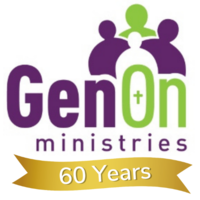
“Every cloud has a silver lining” is a proverbial saying that conveys a sense of optimism. That, no matter how bad the situation, there is something good to come out of it.
John Milton first coined the phrase nearly 400 years ago in a poem which reads, in part, “Was I deceived, or did a sable cloud turn forth her silver lining on the night? I did not err; there does a sable cloud turn forth her silver lining on the night, and casts a gleam over this tufted grove.”
I was startled, and the “silver lining” proverb sprang to mind, when I read an article this morning from NPR entitled, “Loneliness Hasn’t Increased Despite Pandemic, Research Finds. What Helped?”
As the church, we wrestle with how prolonged separation from one another (as the Body of Christ) does (and will do) damage. We believe we are meant to gather, to be in community and relationship with one another, to share common meals. And we believe that’s done best when we’re physically together. And at the same time, we don’t want to spread the virus. Not just any virus—but this pervasive, complicated, dangerous, and easily caught virus called COVID-19.
How can we worship if we can’t sing, speak corporate prayers out loud, pass the peace with a handshake, sit near one another, talk and hug? How can we serve if we aren’t to visit shut-ins, provide meals for the hungry, travel together on mission trips? How can we be devoted to the apostles’ teaching, the fellowship, the breaking of bread, the prayers (Acts 2:42: the early church) if we can’t gather together physically?
At the same time, running through all of these “how can we” or “why we can’t” scenarios is a concern for the ongoing separation. Especially for those living alone and for those unable to socialize with friends and extended family. Loneliness and isolation are real things. Social isolation affects physical, mental, and emotional health. One study equates lack of social connection to smoking and abusing alcohol for physical health impact.
But what of the headline, “Loneliness Hasn’t Increased”? And more importantly, “What helped?”
The article cites a study on loneliness from the Florida State University College of Medicine that checked in with more than 1,500 Americans. It was designed as a one-off look in January 2020 at how loneliness (and other kinds of psychological health) affect physical health. Then came the corona virus and they realized they had a unique opportunity to measure the effects of physical isolation on the condition of loneliness. From January to April they checked in with the same people to ask, among other questions, whether they felt lonely or isolated. No statistically significant difference was noted among the three check-ins. What helped?
We did something about it.
It wasn’t that the conditions for loneliness weren’t there. It was that people adapted, adjusted, got creative, and looked out for one another. They found (like in other situations when people are going through a challenge together) that there’s a sense of solidarity and a strong protective factor. What I found particularly interesting was that among teens where there’s a strong FOMO (“fear of missing out”) pulsing through social media, this sort of social pressure has been reduced. When everyone’s at home, there’s nothing to miss!
Church, we’ve got this.
A friend of mine writes notes to others in our congregation, little by little. A church in Ontario is matching up LOGOS and Sunday school children with adults as pen pals for the upcoming program year. Sabbatical drive-by send offs, birthday party and graduation parades. Virtual worship services through a variety of creative platforms where even those who have moved to Austria and Colorado can attend and greet others. Intergenerational faith formation online gatherings and adult book and Bible studies. Youth group parking-lot distanced and masked events. Drop-off canned food drives. Delivered “summer camp in a box” supplies. Zoom conversations on race and racism with breakout groups for more intimate storytelling. Safely practiced outdoor worship. Gelato truck parking lot time. Sharing “remember when” photos for a canceled annual Youth Summit. And, of course, zoom meetings! What can you add to the list?
These innovative practices will help get us through difficult times and reduce our sadness at separation. Maybe (hopefully!) we’ll hold to many of these creative ideas so that “where two or more are gathered” doesn’t always have to be in physical proximity. Who in your community still needs the connection and support that you can provide?
I thought of “silver linings” when all I had read was the title of the article. And then at the end, this:
“If there is any silver lining to this [pandemic]—and it’s really hard to speak of silver linings—it’s that so many people are finding ways to connect and finding ways to keep relationships.” Amen and amen.
“We know that all things work together for good for those who love God, who are called according to his purpose.” Romans 8:28
Read about GenOn's Bridge Resources for helping your church keep people connected until we can meet traditionally again.




